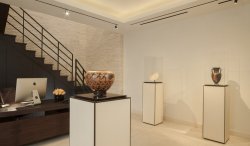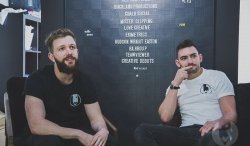- Jobs
- Open Calls
- Events
- Learning
- More
- SUBMIT
OBSCURING ATMOSPHERES AND PUSHING THE COMPLEXITIES OF PAINTING LANGUAGE TO FIND THE LINE BETWEEN ABSTRACTION AND ILLUSION MEET ALYSSA MONKS

ALYSSA MONKS
Through your works your explore concepts of intimacy and vulnerability in the human experience, when did these explorations first evolve in your practise, and what drew you to exploring them?
I always drew from my personal experiences in my paintings, although only became really conscious and intentional about it in the last 5 years or so. I always worked very intuitively and with a sincerity that might seem vulnerable, but I never actually felt vulnerable while making the work. I felt powerful and protected. But in looking back on my earlier work I could see now how much I was actually revealing. And it made me curious about what it was that drew people in. I began to use the elements of intimacy and personal experience more intentionally and somewhat skillfully. It isn’t just about being vulnerable; it is about speaking directly to the viewer’s vulnerability or reaction to the subject’s vulnerability without stepping too hard on the discomfort of it all. Just a little tension, a little discomfort, can be very effective. There also must be some objectivity and distance from the raw emotion in order to paint it. I don’t paint from raw emotion. Rather I use those memories and moments to draw from indirectly, from a distance where I can put it all into a context or perspective.

“Fusion” - oil on linen, 2016
The way you use surface and materials to create depth and a barrier between reality and illusion is remarkable, talk to us about the conception of this and how it has developed through your works?
Thank you. It developed organically. I followed one idea and attraction from one to the next and that’s how the filters and lenses evolved. I began with water in a bathtub. The idea of looking through the water and seeing how it changes and distorts the form and color was interesting and I wanted to see how it might translate into paint. From there the filters got more and more complex (Vaseline, vinyl, textured glass, steam) pushing the complexity to see how far the abstraction could still feel illusionistic. Now I’m using double images of landscape and figure in a similar way although it isn’t really based on one reality. The filters seem to allow me to invent a painting language, which is what I like, and are no longer about representing real life. The whole progression has been about seeing differently, more carefully, more presently was is here, no matter how strange it is.
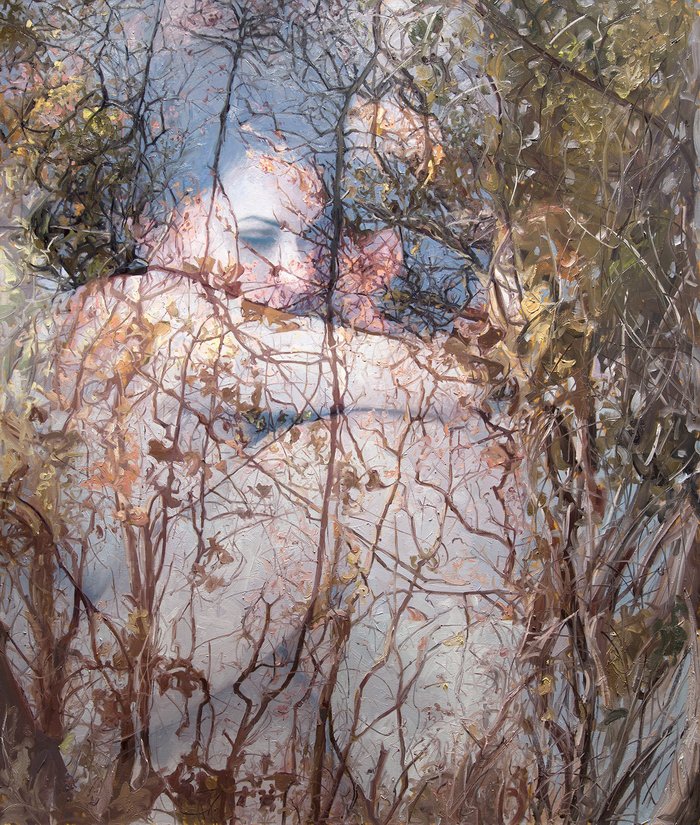
“Impermanence” - oil on linen, 2016
You worked for a long time on works involving the idea of water, what was it like to devote so much time to really immersing in a series of works, and how did the series progress?
Like I said, it started with the bathtub paintings in 2004 or so. I was really looking for the right context for my figures to be in and the bathtub resonated. The water was incidental at first, and then it was the subject. The color and distortion took me down many rabbit holes of curiosity. I explored many different filters and so many showers. What ended up happening was I juxtaposed the foreground and the background of the picture. The steamy glass was the foreground, and the portrait was the background. This concept intrigued me, to somehow make work wherein the atmosphere or context or environment was surrounding the subject completely, even distorting it or obscuring it.
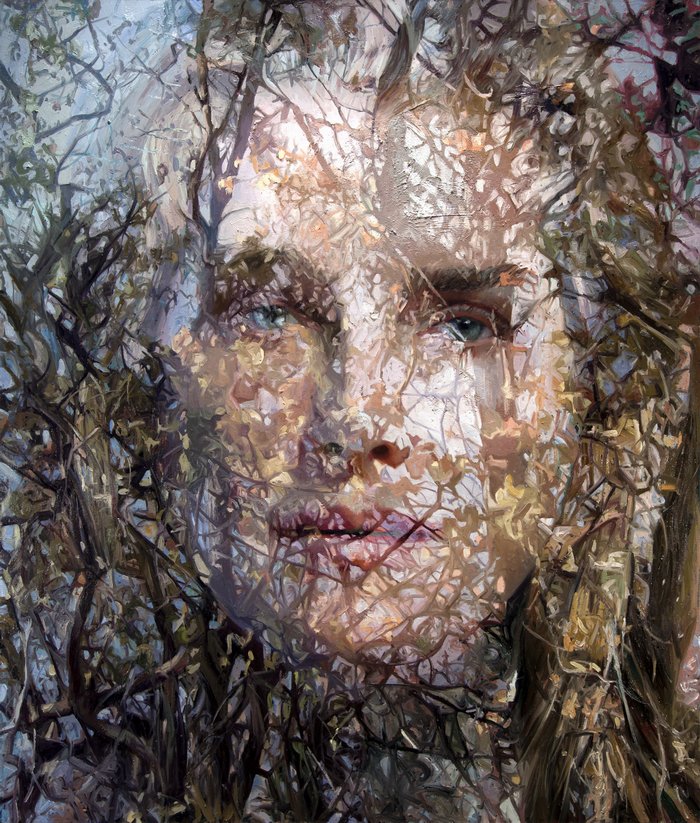
“Awakened” - oil on linen 2015
Your current 2016 body of works uses a lot of imagery of women and nature, tell us about the relationship between the two for you and what you hope to convey with the use of them in your works?
The series I am working on now is not a total departure actually from the water series. I feel it is the next filter or atmosphere I am considering and one I will develop for a while before moving on. I tend to follow my curiosity however long that takes for however many paintings. Water gave me a lot to work with. Now trees, earth and landscapes are giving me an even more complex filter to experiment with. I’m connecting with the landscape for the first time. I was never really drawn to it before. It began to attract me after my mother passed away 4 years ago. It took a few years to figure out how to synthesize it with the figurative work I still want to make. I feel so different now having gone through a very big loss in my life, I don’t feel as satisfied to stay in a shower any longer. I need more space, more color, and more possibility. The landscape offers me that, and a sense of a connection to an earth larger than myself.
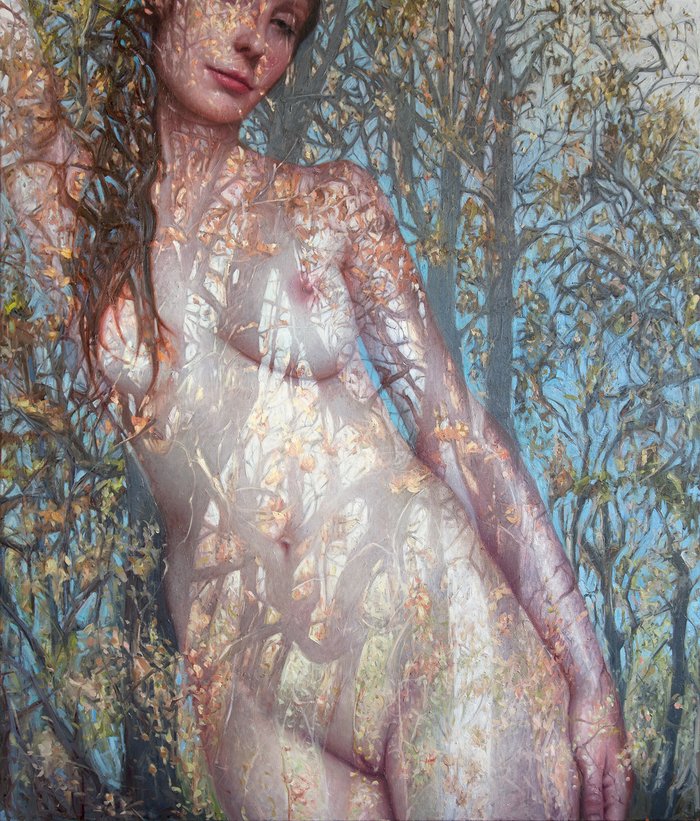
“Air” - oil on linen, 2016
A trustee on the board for the New York Academy of Art is a pretty impressive achievement, what does your role involve and in what ways have you seen your position impart on your studio practise?
I joined the board of trustees at the NYAA in 2010. I love being part of the NYAA community and family and do whatever I can to help and give back to a school that really helped me shape my skills and find my way in my work. It is such a unique school with fantastic faculty and alumni. There are so many ways to give to the school and to the students. I donate paintings, give critiques, brainstorm ideas at board meetings, and attend every event I can. I’m so proud of that school and its faculty, students, and alumni. I strongly recommend anyone interested in figurative art to visit.
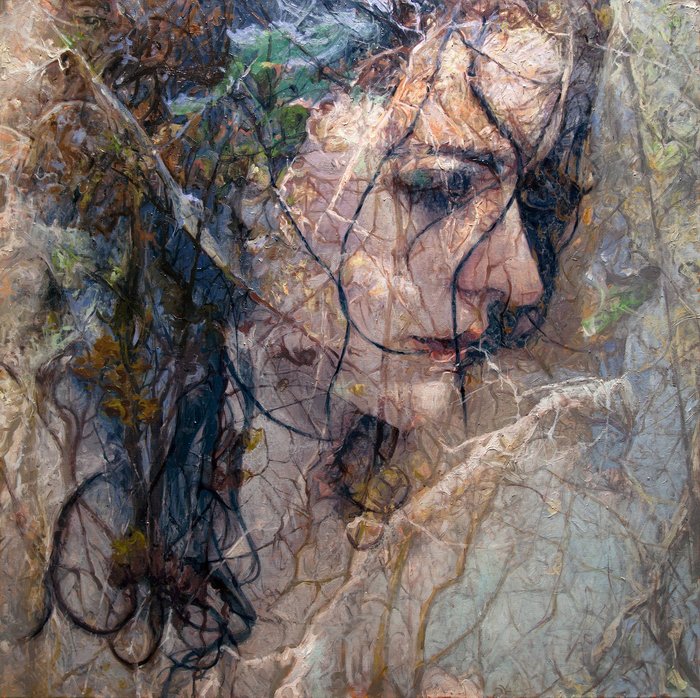
“Absorb” - oil on linen, 2016
Alongside painting, exhibiting and being on the NYAA board you also run workshops, not a clue where you find the time, what kind of things can one expect to do in one of your workshops, and what motivated you to start them?
I do about 7 workshops per year now. It’s a wonderful experience and I’m so grateful for the opportunities. I love to travel to new places and connect with new artists. I get so much out of it and the students are so eager and present and inspiring. I started 10 years ago when a few schools began inviting me. It snowballed from there. My syllabus has evolved over the years. I began teaching very traditional painting techniques from life, but lately have been teaching students my ideas on how best to use the photographic reference in making paintings. It was something I never was formally taught and learned about in my own practice. There is still some taboo about working from photography among some art circles, and I want to show artists that there is more to it than just copying the photograph. I talk all about being connected to the physicality of the paint and materials themselves and one’s own stroke. I talk about how to edit the information in the photograph and make choices about what to include and how. I see the workshops evolving again soon as I’d like to reintroduce the live model. It’s important to me to keep it fresh and exciting so that I can also be learning and growing as a teacher as well.
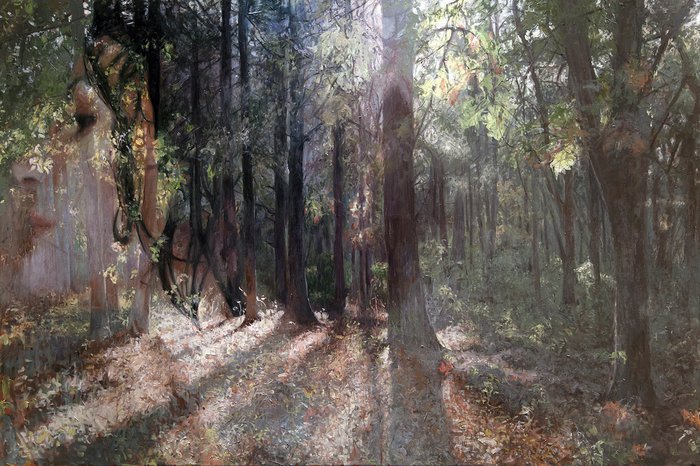
“Synthesis” - oil on linen, 2015
SEE MORE OF ALYSSA’S WORK AT www.alyssamonks.com
INTERVIEW by HANNAH SMITH
|
Paul Robinson
Fine Artist |
HASHIMOTO CONTEMPORARY
Art Gallery Director |
KALLOS GALLERY
Art Gallery |
CREATIVE DEBUTS
Co-Founder of CREATIVE DEBUTS |



